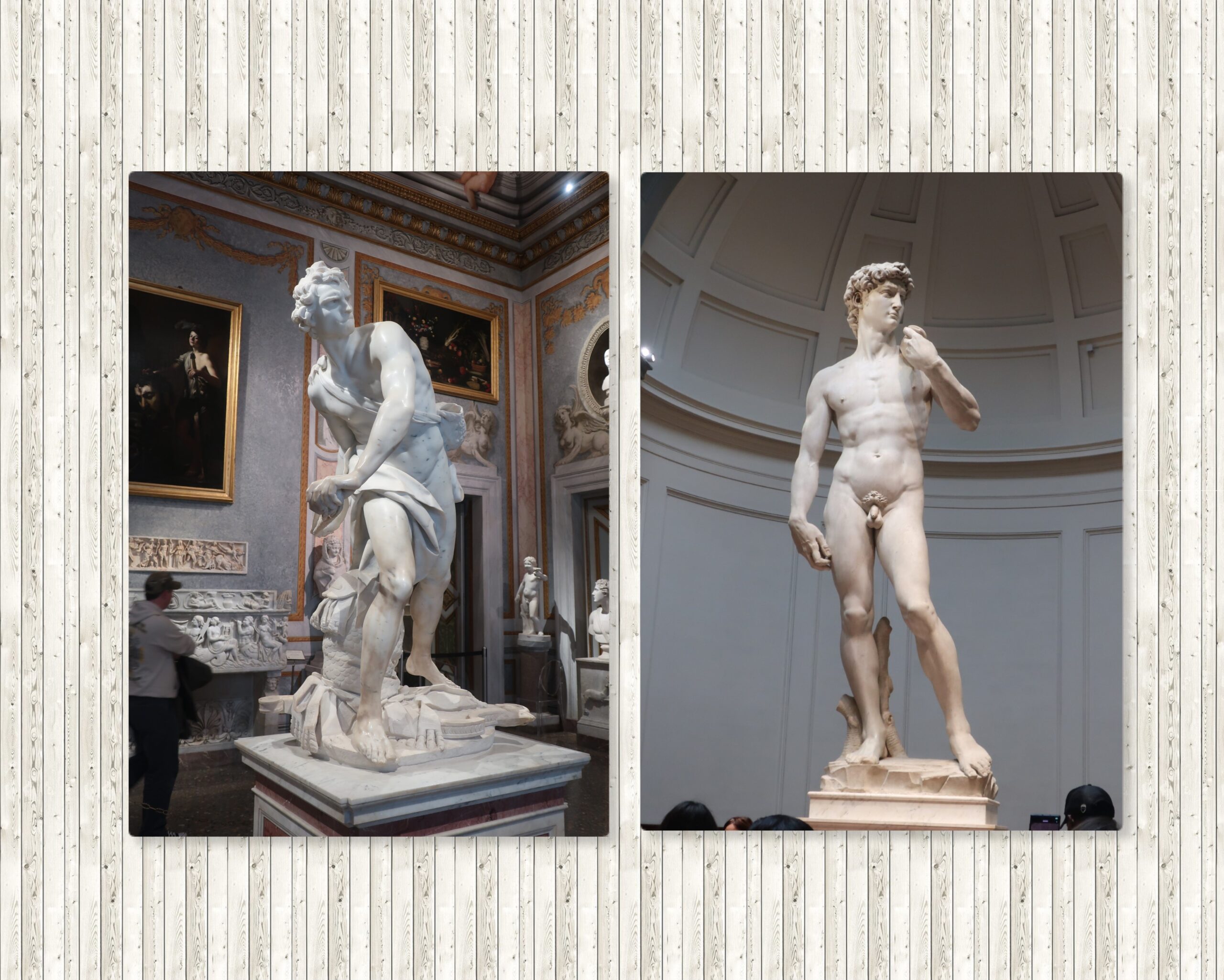Table of Contents
Travels in Rome] (19) Bernini's "David" - Comparison of Bernini's amazing concentration and Michelangelo's "David".
Bernini's treasures from the Borghese MuseumThe Plunder of Proserpina.", ,Apollo and Daphne.introduced the company.

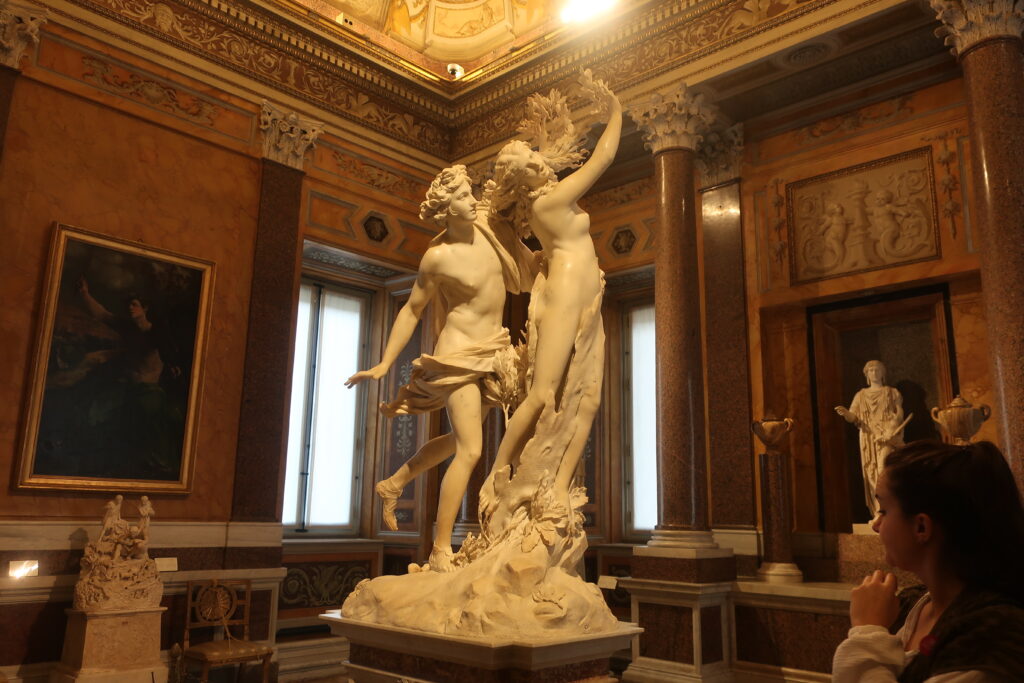
This article will introduce the third of these treasures, "David.
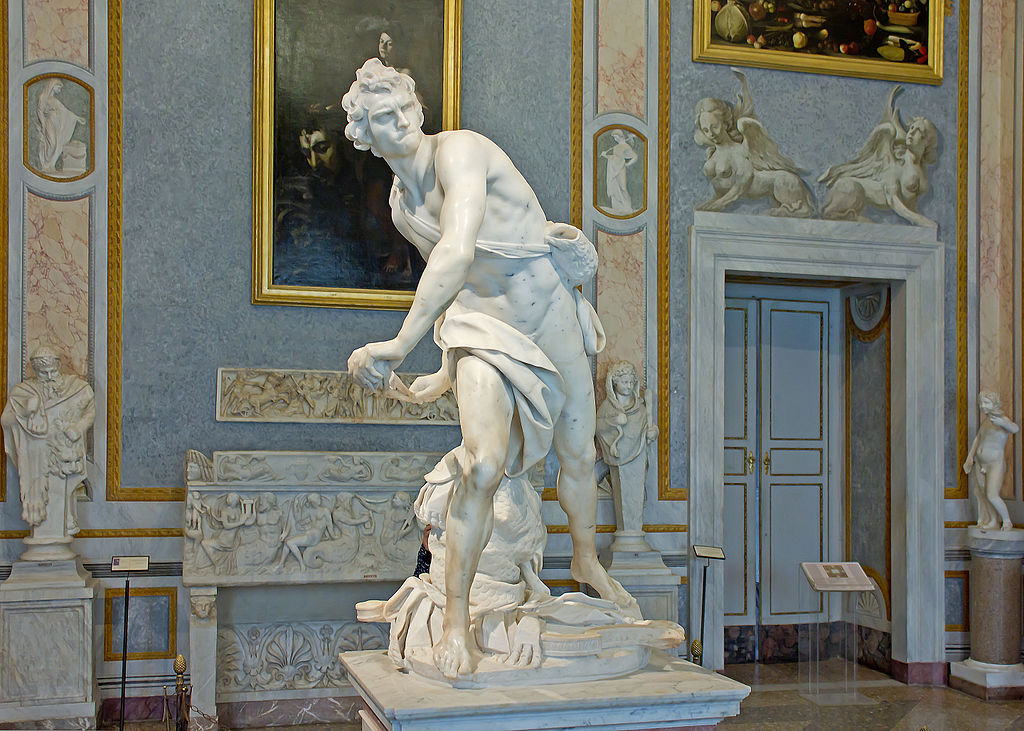
The production of "David" and Bernini's incredible concentration
We have already noted that Bernini interrupted his work on Apollo and Daphne to finish "David" in a single sitting in August of 1623. In this work ("David"), he far surpassed himself, completing it in only seven months. Baldinucci wrote: "In this work [David] he surpassed himself by far and finished it in only seven months, because even at such a young age, as he often said later, he devoured the marble and never used it in vain. Baldinucci's words do not sound exaggerated in the slightest. The amount of work Bernini did, the speed with which he did it, and the concentration with which he did it all make one realize what a strong will and stamina he possessed, and what extraordinary powers of concentration he was endowed with.
Baldinucci tells us elsewhere that when he was not working on construction, he worked on his marble sculptures for seven hours straight. His young assistants could not keep up with him, and one once tried to stop him. One of his young assistants could not keep up, and one tried to stop him. I am captivated.
He always worked as if in a trance. His concentration was so strong that he had to be accompanied on the scaffold by an assistant to keep him from falling off. Cardinals and princes often came to see him at work, and they were often breathtakingly impressed by his work, and often watched him for a while before leaving without greeting him. It is still astonishingly fast to produce a work of this scale in seven months. However, there is a sense of youthful vitality in this work that makes one believe this to be true.
Masumi Ishinabe, Yoshikawa KobunkanBernini, Giant Star of Baroque Art.p32-33
*some line breaks.
It is often said that "a genius is a person of overwhelming concentration."
However, Bernini's concentration still seems to stand out from the crowd. Michelangelo is like a god." I can't help but think that Bernini must have reached that level. There is something different about this man.
Motifs of David and comparison with "David" by Donatello and Michelangelo
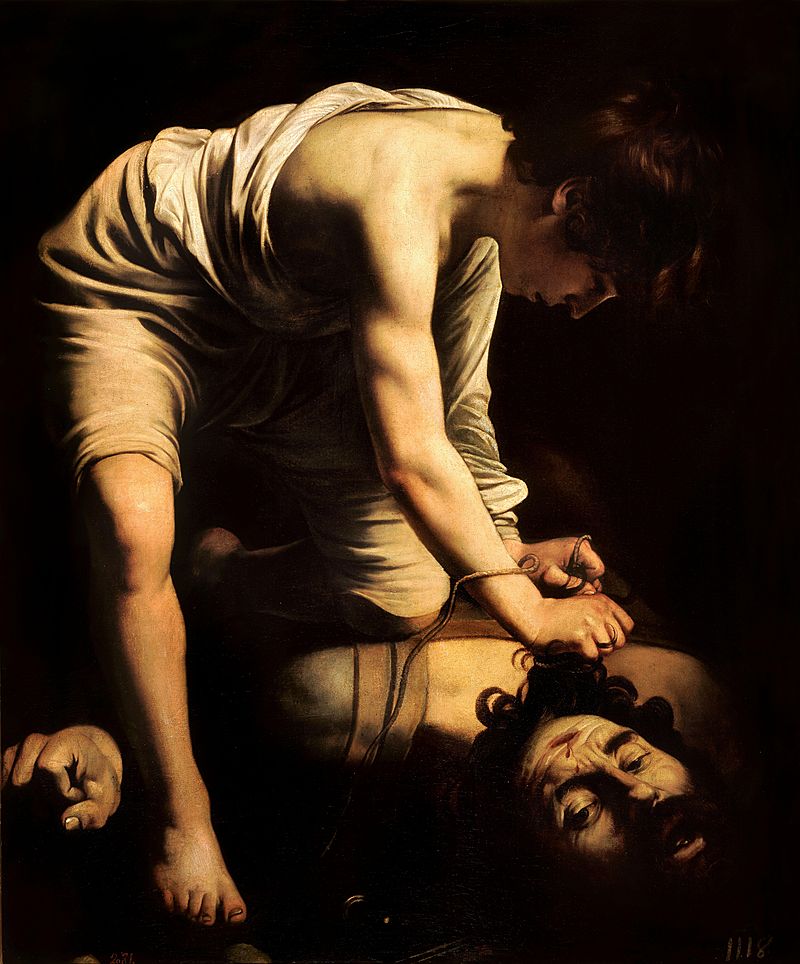
Needless to say, David is a hero of the Old Testament. His defeat of the Philistines is found in the Book of Samuel (1, 17).
The Philistine rose up and approached to intercept David. David also quickly ran across the battlefield and confronted the Philistine. David put his hand in his sack, took a stone, and released it with a stone-thrower, striking the Philistine on the forehead. The stone bit into his forehead and he fell flat on his face.
Thus David defeated this Philistine with a stone-thrower and a single stone. And David had not a sword in his hand, but he slew the Philistine. David ran and straddled the Philistine, took his sword, pulled it out of its sheath, and beheaded him. When the Philistines saw that their hero was dead, they fled.
Many sculptors have repeatedly created statues of David, but the two that come to mind are Donatello and Michelangelo's "David," which depicts the victorious David who took the sword and beheaded Goliath. Donatello's "David" depicts the victorious David as a beautiful boy who took the sword and beheaded Goliath. Michelangelo, on the other hand, did not consider the general type of David as seen in the Donatello, but created David as a young man with mental tension in his body just before he went into battle.
Both are excellent works, but Michelangelo's "David" stands out for the uniqueness of its conception. But Bellini's "David" is no less original. He did not simply create a statue of David, but the story of David and Goliath itself. It is obvious to everyone that the climax of the story is the scene in which David releases a stone to defeat Goliath. Therefore, Bernini captured the moment when David throws the stone with all his might.
Masumi Ishinabe, Yoshikawa KobunkanBernini, Giant Star of Baroque Art.p33-34
*some line breaks.
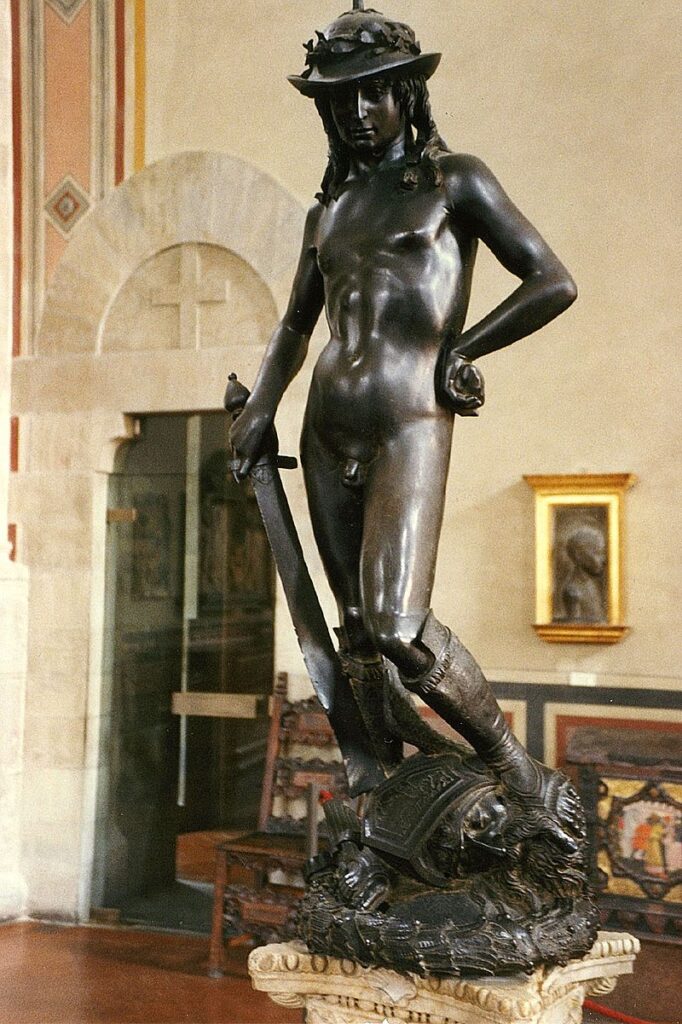

I was surprised to learn that before Michelangelo, it was common to carve a figure like Donatello's after he defeated Goliath. When we think of David, we tend to think of Michelangelo. However, Michelangelo's "David" itself was overwhelmingly innovative.
And from there, Bernini created something even more innovative.
Comparison of Michelangelo and Bernini's David
This comparison of Bellini's "David" with Michelangelo's work offers a number of suggestions. The first thing to notice is that while Michelangelo's conception is highly conceptual, Bellini's is plain and simple.schematicThis is the point that he aims to make. According to Tornay, Michelangelo is a citizen who fights for the Republic in two virtues: "manliness"angerAs an incarnation of "David," he created "David" in the image of Hercules. In other words, this work had political significance in his time.
But how many people today, looking at this sculpture without knowing anything about it, would recognize it as a statue of David? Perhaps the work is so well known that we do not question its identity as David. This is because the work is nothing but David, which is what Michelangelo thought David was. Michelangelo does not touch the core of the story at all, limiting the objects that hint at the story to a bag of stones, and even that is not visible from the front.
Bernini, on the other hand, tried to visualize David's great drama in a way that everyone could understand. His main focus was to show David at the decisive moment of the story, but he did not forget to explain David according to the biblical story. David wears on his shoulders a "shepherd's bag, a bag of stones," and at his feet is the helmet of armor that Saul had given him but that he hated and took off. Underneath, a lyre in the shape of an eagle peeks out (the eagle is the coat of arms of the Sipione Borghese). (The eagle is the emblem of Sipione Borghese, which Donofrio interpreted as David's attempt to overthrow Ludovico Ludovisi, Sipione's political enemy.)
This fact makes us think about the difference between art and artists in the Renaissance and the Baroque. In the Renaissance, art was considered to have its own raison d'etre in the Neoplatonist climate, and could exist to some extent as a self-contained entity.
In the Baroque period, however, art was required to play some kind of social role. In other words, art was required to play a social role of all kinds.advertisementThe rhetoric is used to move as many people as possible.
At the same time, the Neoplatonist conception of genius and its admiration for mystery is lost, and the artist returns to earth once again. The art and artists of these three eras are symbolically represented in Michelangelo and Bellini.
This difference in time is also evident in the form of the paintings. In "David," Michelangelo pursued a timeless form, a monumental body, while Bellini sought to capture the movement and tension of the moment. Michelangelo's supremacy lay in the solidity of his figures, as evidenced by his famous statement that a sculpture should be able to fall from a cliff and remain unaffected. It is also well known that Michelangelo valued sculpture that is "chipped away," and he had great disdain for sculpture that is "added on.
In contrast, in "David," Bellini seems to have attempted to achieve in marble the expressive power of bronze sculpture that Michelangelo despised, though not as much as in "The Sack of Proserpine" or "Apollo and Daphne.
Thus, although the two masters share the same vocation in marble sculpture, the forms they sought to create from marble were completely different. However, it is important to remember that both artists started their work from the study of ancient sculpture. Michelangelo's "David" is often pointed out as being remarkably "classical," while Bellini's work is thought to have been inspired by the "Borghese Galitator" in the Louvre and other works. In both cases, the basis of their sculptures is the study of ancient sculpture. Here, too, the fundamental problem of Italian art history that I mentioned earlier appears.
Masumi Ishinabe, Yoshikawa KobunkanBernini, Giant Star of Baroque Art.p34-36
*some line breaks.


Indeed, if one were to look at Michelangelo's "David" without knowing anything about it, one would not recognize it as David.
In contrast, Bernini's "David" is visually recognizable at once as David. This difference is significant.
Masumi Ishinabe'sIn the Baroque period, however, art was required to play some kind of social role. Art, on the other hand, was required to play some kind of social role during the Baroque period.advertisementThe "A" in "A" is used in the "B" and is therefore rhetorically manipulated to move as many people as possible."This commentary is so important for the art of Rome.
It was under this philosophy that art flourished in Rome, the temple of beauty we see today.
Bernini's magic to draw you into a narrative space
Two things remain about Bernini's "David" that must be mentioned. The first is that this work, like all Borghese sculptures, was placed against a wall, which means that its basic perspective was clearly defined.
Another is that Bellini intends to lure the viewer, who stands in this basic perspective, into the space created by the sculpture. Michelangelo's "David" also has a kind of psychological effect of making the viewer feel that Goliath is in the distance, staring sharply at David. However, the strong completeness of the sculpture itself makes us feel that this is not so important.
In contrast, Bernini's "David" is a realistic work that tells a story to the viewer. In other words, David is clearly trying to throw a stone at Goliath, and we, the viewers, are forced to assume the existence of the other person behind the stone. In this way, we are unwittingly drawn into the space of the story. The intention to lure the viewer into the space created by the sculpture as a witness to the story, so to speak, is evident in the works mentioned so far. In "David," however, this intention is more concretely conceived. This idea of breaking down the psychological barrier between the viewer and the work, between the real space and the fictional space, is an important element that characterizes Bernini's figurative world. Viewers of Bernini's and Baroque art often lose sight of the boundary between the space of reality and the space of art. It is a world of baroque magic that can never be experienced in the world of Michelangelo or the Renaissance.
Masumi Ishinabe, Yoshikawa KobunkanBernini, Giant Star of Baroque Art.p36-37
*some line breaks.
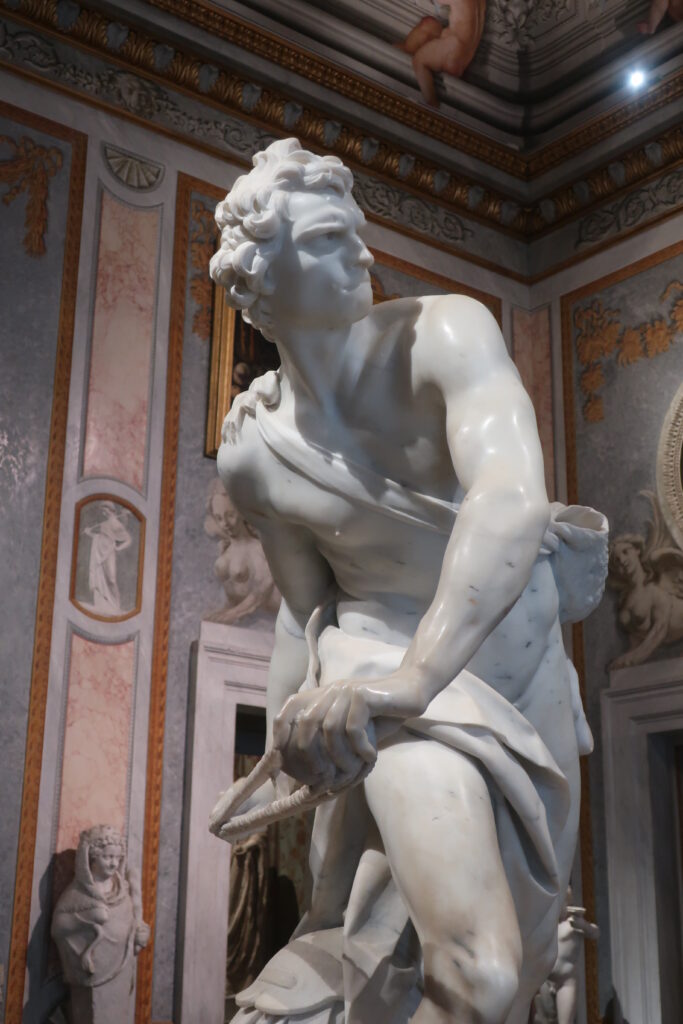
I was one of those who were drawn into Bernini's magic at the Borghese Museum. As Masumi Ishinabe states here, David's gaze is clearly on Goliath, and you can feel that he is about to throw a stone. And we can feel that he is about to throw a stone. We are witnessing that moment. Bernini's sculptures blow away our real world and forcefully pull us into a fantasy, a narrative space. This narrative, this message, is the essence of Bernini's work, which he achieved in his early twenties. He was in his early twenties when he reached this level of achievement, making him a formidable precocious genius. Masumi Ishinabe describes the young Bernini as follows.
The above is a rather detailed review of works commissioned by Sipione Borghese, but it should be understood that these works opened a new page in the history of sculpture. The creativity of the artist in his early twenties, which spills forth from each of his works, along with the works of his youth, is a manifestation of a genius rarely seen in the history of art.
Masumi Ishinabe, Yoshikawa KobunkanBernini, Giant Star of Baroque Art.p37-38
The creativity of Bernini in his early twenties, which spills forth from each work, along with the works of his youth, is a rare manifestation of genius in the history of art."
The Borghese Gallery is the perfect place to experience the genius of the young Bernini, and after seeing the museum's Bernini works in four articles, my experience at the Borghese Gallery was one that had a strong impact on me as well.
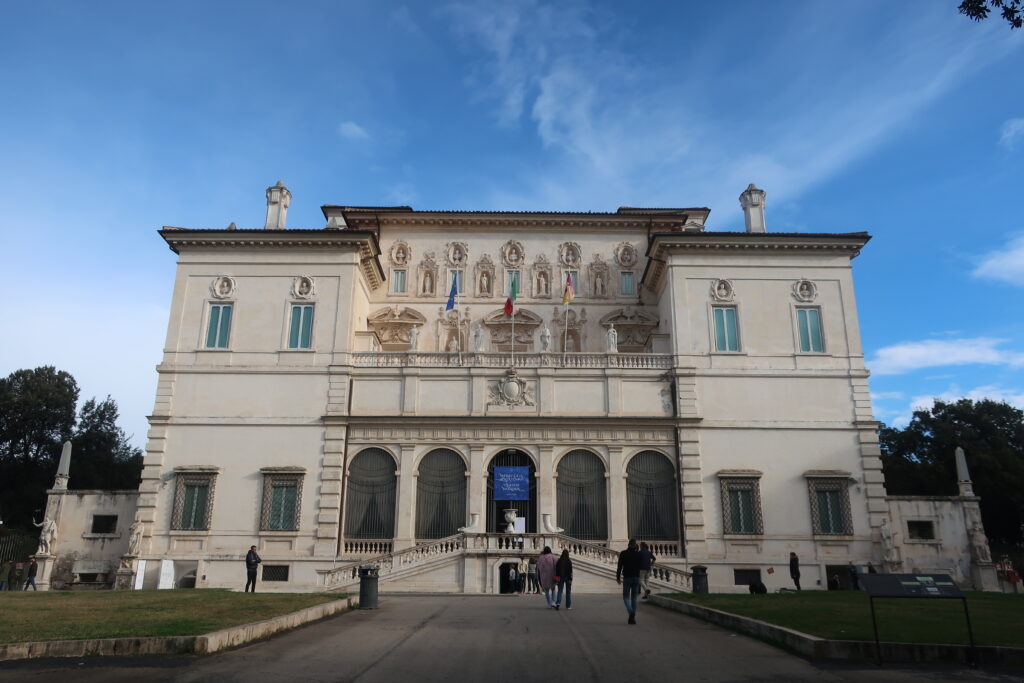
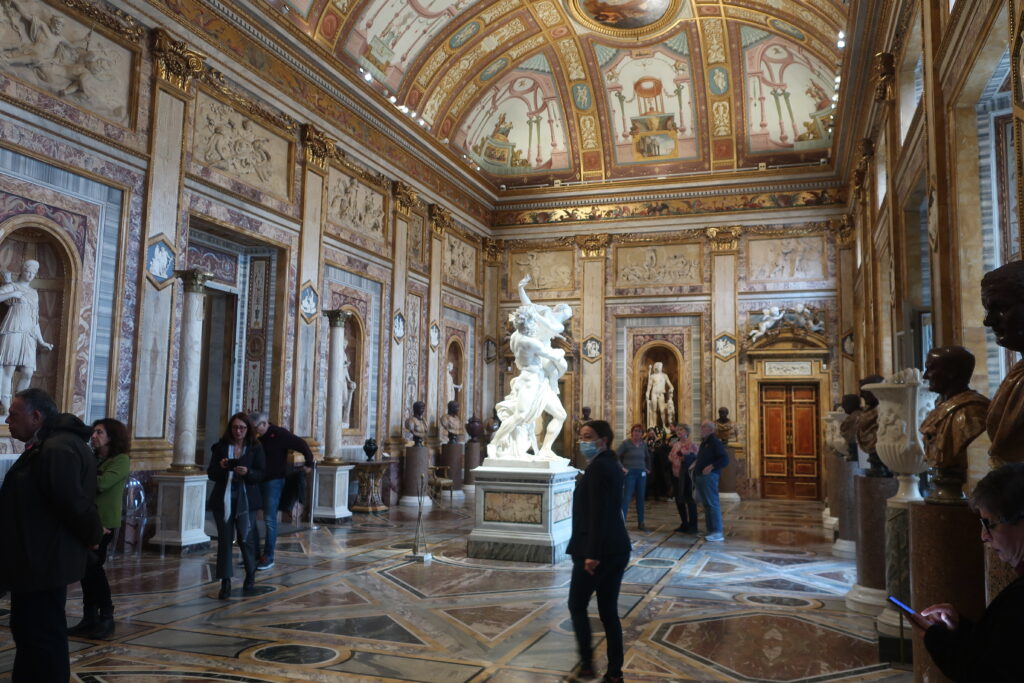
We encourage you to visit this museum during your stay in Rome. You will be astonished by Bernini's genius.
be unbroken
*The list of articles in the "Rome Travel Journal" can be found atCategory page hereindicates direction or goal (e.g. "to")
*Please visit this category page for recommended books to learn about Rome and Italy.
The Rise and Fall of the Roman Empire, the Vatican, and Roman Catholicism."
The Italian Renaissance and the Revolution in Knowledge."
Next Article.
Click here to read the previous article.
Related Articles











